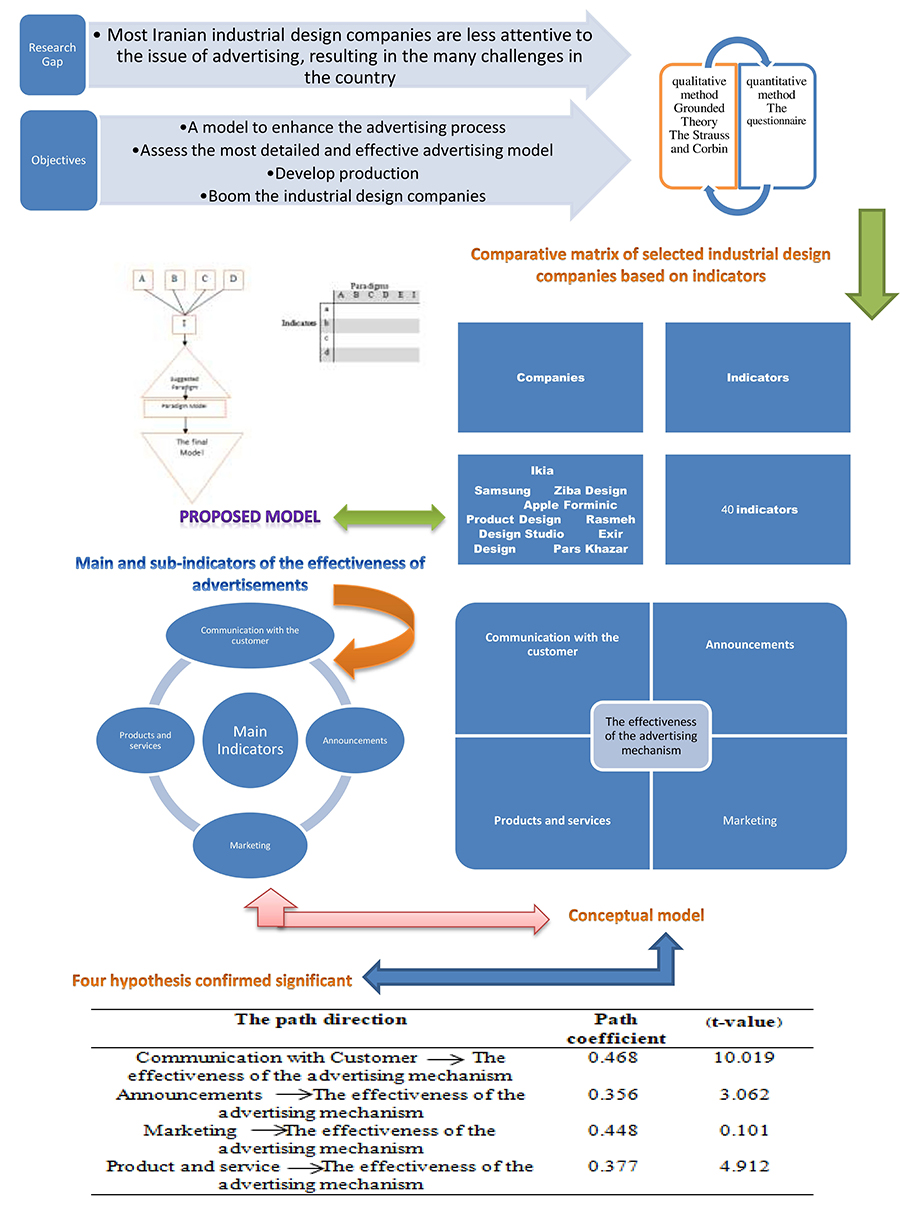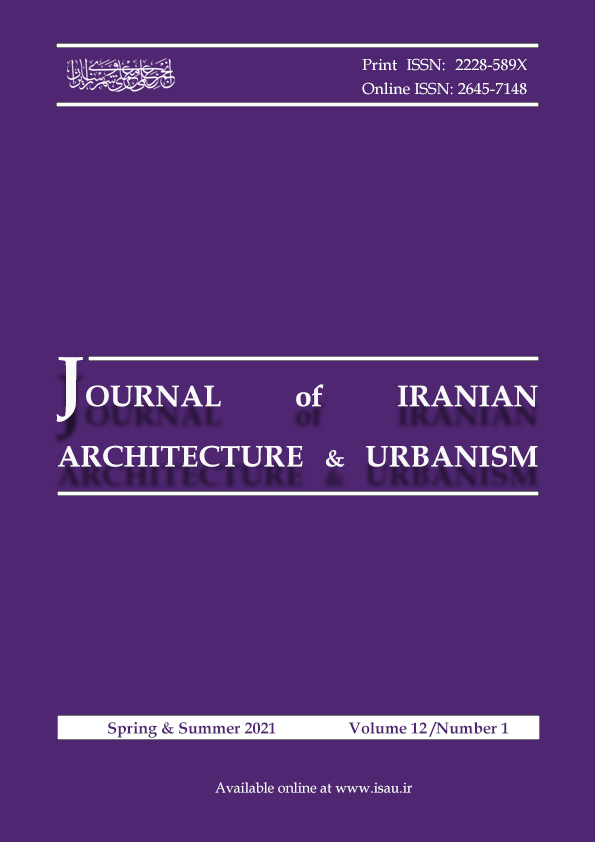Document Type : Original Research Paper
Authors
- Sarah Saffari 1
- Hasan Sadeghi Naeini 2
- Ata Allah Abtahi 3
- Seyed Jamaleddin Tabibi 4
- Ali Akbar Farhangi 5
1 Ph.D. Candidate in Media Management, Faculty of Economics and Management, Science and Research Branch, Islamic Azad University, Tehran, Iran.
2 Associate Professor, School of Architecture and Environmental Design, Iran University of Science and Technology, Tehran, Iran.
3 Assistant Professor, Faculty of Economics and Management, Science and Research Branch, Islamic Azad University, Tehran, Iran.
4 Professor, Department of Health Services Management, Faculty of Science and Technology, Science and Research Branch, Islamic Azad University, Tehran, Iran.
5 Professor, Faculty of Economics and Management, Science and Research Branch, Islamic Azad University, Tehran, Iran.
Abstract
Extended Abstract
Backgroundand Objectives: Advertising is an effective marketing medium for attracting consumers and acts as a link between the brand and its customers. The efficacy of this contact network, on the one hand, depends on determining the target group and the effectiveness of advertising messages. On the other hand, advertising effectiveness is not limited to product purchases but instead involves aspects of awareness and the intention to buy. In a competitive market between companies, advertisement is relevant, and most Iranian industrial design companies are less attentive to the issue of advertising, resulting in many challenges in the country. Since traditional advertising does not completely fulfill the needs of this market, the importance of advertisement in defining and generating the need and the use of the advertised subject should be considered in a wide scope. In order to improve the production and development of industrial design firms, this study aims to provide an appropriate model to enhance the advertising process, and its main objectives are to identify the main and sub-indicators of advertising effectiveness at home and abroad. It also tries to assess the most detailed and effective advertising model to develop production and the booming of the industrial design companies in Iran.
Methods: This study used both qualitative and quantitative methods. The indicators are derived from the study literature in order to determine the frequency of indicator repetition based on the status of the paradigms, the degree of repetition, and the commonality of the sum of extracted indicators in the former. Using Grounded Theory and the Strauss and Corbin approaches, the success indicators of the identified paradigms (foreign companies of Apple, Samsung, IKEA, and Ziba Design) were determined from the consumers' perspective, and the similarities and discrepancies between indicators were established. Sub-indices with the highest frequency were coded, and a model was presented. In the quantitative approach, descriptive and inferential statistical methods were used to review and test the proposed model. So, a questionnaire containing 3 demographic questions (age, education, and gender) and 45 questions with 5 point Likert scale were designed. Second, the sample size was identified using the random sampling method. The questionnaire was distributed among 384 customers of 4 domestic companies, including Rasmeh Design Studio, Exir Design, Pars Khazar, and Forminic Product Design. Data were collected and analyzed. The validity and reliability of the questionnaire was confirmed using the content method (expert opinion), Cronbach's alpha, and model validation was confirmed using Smart Pls software.
Findings: 40 indicators with the highest frequency, which were ignored by domestic industrial design firms, were chosen based on the indicators of international companies Samsung, Ziba Design, IKEA, and Apple, and classified and coded in four categories: communication with the consumer, announcements, marketing, and products and services. The suggested model was presented in relation to advertisement efficacy, with four hypotheses elucidated. The validity of the model was confirmed using the validity index and the redundancy check. The Smart Pls least squares technique was used to test the relationship of the examined variables in each of the study hypotheses based on a causal structure. The measurement model (the relationship of each visible variable to the hidden variable) and the structural model (the relationship of the hidden variables to each other) were determined in the general analysis model. The t-statistic was calculated using the bootstrapping technique to determine the significance of the relationships. The effects of a relationship with customer, announcements, marketing and products and services on advertising mechanism were calculated 0.468, 0.356, 0.448, and 0.337, respectively. The test probability statistics for each hypothesis were 10.0199, 3.062, 8.101 and 4.912, respectively. As they were greater than the critical value for t, 1.96, the effects were considered significant. Therefore, all hypotheses were significant at the 95% confidence level.
Conclusion: The findings revealed that changing the advertising mechanism requires more than just announcements and advertisements. Particular attention should be given to the product and service categories. The indicators identified in this category demonstrated that carefully evaluating the opportunity value of the product and service, taking into account affordance, applying Gestalt in product integration, evaluating the consumer experience and analyzing Kano, and developing flexible samples and serializations will improve productivity and help the business grow. In order to reach the announcing stage, motionography and infographics must be used to introduce and portray the brand and product, as well as viral marketing on social networks and the use of hidden and explicit advertising in the media and community. The findings highlight the importance of paying attention to the customer's familiarity with the goods, expressing the possible advantages of purchasing and consuming products, considering the thoughts and needs of customers, and taking into account the desires and expectations of customers. Competitive competition can help the R&D department of domestic industrial design firms identify the demand and evaluate competitors, and content marketing and announcements lead to easy access to the desired product or service. The study of ethnography and demography in order to extend a company's branches will contribute to the systemic development of the company. Using various advertising methods can result in adequate consumer awareness of the product and sales growth. The implementation of a strategy in line with the company's business goals leads to constant communication with customers, depending on the extent and geographical area of the company's operation.
Graphical Abstract
Highlights
Keywords


